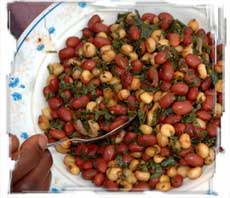Metal silos lock out maize pests in Africa
Farmers in developing countries typically lose 20-30% of their crop due to poor grain storage facilities. Through a project with roots in Central America, African maize farmers are adopting metal silos to protect their families’ food supply and source of income.
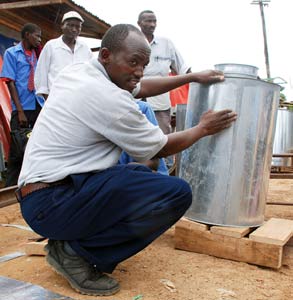 Six mouths are a lot to feed so Pamela Akoth, a 39-year-old Kenyan farmer and mother to half a dozen children, doesn’t want any weevils or borers—two of the most common post-harvest pests—nibbling at her grain supply. Akoth grows maize on 0.7 hectares in Homa Bay, western Kenya. In the past, she stored her grain in a traditional granary: a structure built with mud, branches, and cow dung that allows free entry to the maize weevil and the larger grain borer, the two most damaging pests of stored maize in Africa. Infestation starts in the field and continues after harvest when grain is stored. Losses of 10-20% are reported three months after storage, and this goes up to more than 50% after six months.
Six mouths are a lot to feed so Pamela Akoth, a 39-year-old Kenyan farmer and mother to half a dozen children, doesn’t want any weevils or borers—two of the most common post-harvest pests—nibbling at her grain supply. Akoth grows maize on 0.7 hectares in Homa Bay, western Kenya. In the past, she stored her grain in a traditional granary: a structure built with mud, branches, and cow dung that allows free entry to the maize weevil and the larger grain borer, the two most damaging pests of stored maize in Africa. Infestation starts in the field and continues after harvest when grain is stored. Losses of 10-20% are reported three months after storage, and this goes up to more than 50% after six months.
On the advice of the Catholic Diocese of Homa Bay and with help from a subsidy program—the Agriculture and Environment Program (AEP) of the Diocese of Homa Bay helps needy farmers to acquire metal silos by providing interest-free loans—Akoth purchased a metal silo able to store 20 bags (1,800 kilograms) of maize; roughly what her land yields. Made of galvanized metal, the silo is airtight, so it keeps out insects and suffocates any that might have snuck in with the stored grain. “I am happy that since I started using the silo I don’t experience any loss of grain,” Akoth says. “I have enough to feed my family and even some left over that I can save and later sell, when there is a shortage in the market.”
Akoth is one of many farmers who has benefited from the Effective Grain Storage Project. Supported by the Swiss Agency for Development and Cooperation (SDC) and the generous unrestricted contributions CIMMYT receives, this effort aims to improve food security in sub-Saharan Africa through effective on-farm storage technologies, like metal silos. Participants are promoting the silos and training artisans who build and sell them. “The focus of the project is to ensure that farmers use only well-fabricated, high-quality metal silos,” says Fred Kanampiu, CIMMYT agronomist and former project head. “We are training artisans who will make and sell these silos.”
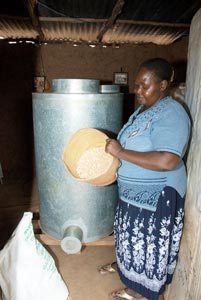 Local manufactureres cash in on silo demand
Local manufactureres cash in on silo demand
The Effective Grain Storage Project has supported two artisan workshops in Homa Bay and Embu, with a total of 37 artisans trained. One of these is Eric Omulo Omondi, a 23-year-old metal worker based in Homa Bay. Along with 29 other artisans, he attended a free training workshop on metal silo construction in 2009. Since then, Omondi has made 15 metal silos and his average monthly income has tripled.
“I was lucky enough to have been selected by the diocese as one of the artisans to be professionally trained,” Omondi says. The training exercise was facilitated by CIMMYT, who contracted a skilled artisan from Central America. There and in South America and the Caribbean, the POSTCOSECHA program (also funded by SDC) had launched the use of metal silos for storing maize grain, significantly reducing post-harvest losses among more than 300,000 families.
To date, the current project is responsible for the construction of 146 silos across Kenya and Malawi. Two strong local partners, World Vision International in Malawi, and the Catholic Dioceses of Embu and Homa Bay in Kenya, host training sessions and promote metal silo use. In Malawi, metal silos have been used since 2007, initially supplied by a private company contracted by the government to distribute silos throughout the country. “Over the past few years, farmers have recorded high maize harvests, and now even request silos of a 7.5 ton capacity,” says Essau Phiri of World Vision-Malawi.
In Mchinji District, Central Malawi, artisan Douglas Kathakamba has benefited from the CIMMYT-World Vision collaboration. He launched his metal works business making ox-carts, door and window frames, and bicycle ambulances, but has found even greater profit since 2007 by building metal silos. As a result of silo income, he has set up a new workshop, sent his five children to school, and even covers the costs of university studies for two adopted children.
From sacks to sheet metal
Douglas is now an ardent supporter of the metal silo and receives many customers through referrals. He also educates rural farmers. In Kachilika Village of northern Malawi, he has recently worked with a farmers’ club that had never heard of metal silos. The 25 members store their grain communally and, after Douglas constructed and donated a silo to them, commissioned him to build four more. With the proceeds from increased grain sales, the members now pay for children’s schooling and purchase items such as clothing, domestic products, and farm inputs for the next season.
“Before the introduction of silos, we were using sacks and nkhokwe (the traditional granary), but we were not able to save much,” says Andrew Kasalika, the club chairman. “Now, we can say that our lives have changed.”
A particularly dedicated safe storage advocate in Kenya is Sister Barbara Okomo, a former Homa Bay teacher and current principal of St. Theresa’s Girls’ Secondary School in Kisumu, roughly a two hour drive from Homa Bay. Since she started working with the Diocese’s Agriculture and Environment Program (AEP), Okomo has had artisans fabricate 40 metal silos at her schools, which include 10 at her current school. The silos are made on-site to cut costs and make it easier for potential adopters.
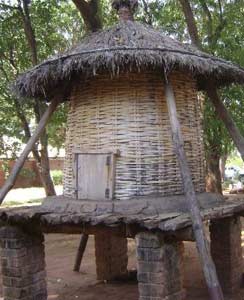 “I have used the silos for several years now, and I am convinced that this is the best method to store grain,” Sister Barbara says. “With other storage methods, we would lose up to 90% of our stored grain—now we lose nothing.” Schools have been early adopters of metal silos because many grow and store grain year-long to feed their students.
“I have used the silos for several years now, and I am convinced that this is the best method to store grain,” Sister Barbara says. “With other storage methods, we would lose up to 90% of our stored grain—now we lose nothing.” Schools have been early adopters of metal silos because many grow and store grain year-long to feed their students.
To save you need to spend
A challenge for African farm households is the initial costs of a silo. They are relatively cheap—in Homa Bay, a three-bag silo costs about USD 74 and a 20-bag silo USD 350—and with an effective lifetime of more than a decade, the silos more than pay for themselves, in terms of food security and surplus grain savings. But the average monthly cash income of a Homa Bay farmer ranges from USD 40 to 130. This means that family heads often have to choose between providing basic needs and investing in the silo. “Without support from the Diocese, I wouldn’t have been able to buy a silo,” says Akoth. Representatives of Equity Bank have met with stakeholders in Homa Bay to discuss micro-finance opportunities that would allow many more farmers to purchase metal silos. Micro-financing would also help more artisans enter the emerging silo industry, as current investment capital costs are high.
“Metal silos bring food security to the poor,” says Tadele Tefera, the current EGS project coordinator. “Not only what farmers harvest, but more importantly, what they store over seasons, could make a difference in their livelihoods.”
A recent (June 2010) news feature on metal silos, aired in Kenya, gives testimonials on the success of the silos from local users.
Further information: Tadele Tefera, Project Coordinator, Effective Grain Storage (t.tefera@cgiar.org)
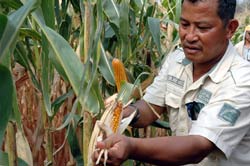 At the Thai Department of Agriculture’s Nakhon Sawan Field Crops Research Center, Pichet Grudloyma, senior maize breeder, shows off the drought screening facilities. Screening is carried out in the dry season, so that water availability can be carefully controlled in two comparison plots: one well-watered and one “drought” plot, where watering is stopped for two weeks before and two weeks after flowering. Many of the experimental lines and varieties being tested this year are here as the result of the Asian Maize Network (AMNET). Funded by the
At the Thai Department of Agriculture’s Nakhon Sawan Field Crops Research Center, Pichet Grudloyma, senior maize breeder, shows off the drought screening facilities. Screening is carried out in the dry season, so that water availability can be carefully controlled in two comparison plots: one well-watered and one “drought” plot, where watering is stopped for two weeks before and two weeks after flowering. Many of the experimental lines and varieties being tested this year are here as the result of the Asian Maize Network (AMNET). Funded by the 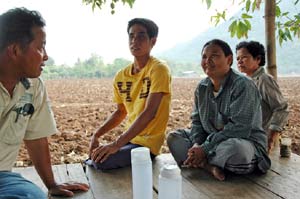 For Grudloyma, this collaborative approach is a big change. “We’ve learned a lot and gained a lot from our friends in different countries. We each have different experiences, and when we share problems we can adapt knowledge from others to our own situations.”
For Grudloyma, this collaborative approach is a big change. “We’ve learned a lot and gained a lot from our friends in different countries. We each have different experiences, and when we share problems we can adapt knowledge from others to our own situations.”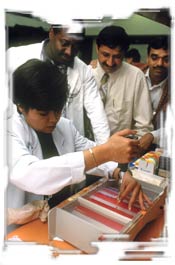 A USAID-funded study by Rutgers economist Carl Pray concludes that present and future impacts of the Asian Maize Biotechnology Network (AMBIONET)—a forum that during 1998-2005 fostered the use of biotechnology to boost maize yields in Asia’s developing countries—should produce benefits that far exceed its cost.
A USAID-funded study by Rutgers economist Carl Pray concludes that present and future impacts of the Asian Maize Biotechnology Network (AMBIONET)—a forum that during 1998-2005 fostered the use of biotechnology to boost maize yields in Asia’s developing countries—should produce benefits that far exceed its cost.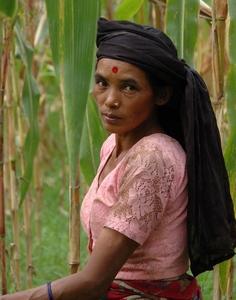 More than two decades of joint efforts between researchers from Nepal and CIMMYT have helped boost the country’s maize yields 36% and those of wheat by 85%, according to a report compiled to mark the 25th anniversary of the partnership. As a result, farmers even in the country’s remote, mid hill mountain areas have more food and brighter futures.
More than two decades of joint efforts between researchers from Nepal and CIMMYT have helped boost the country’s maize yields 36% and those of wheat by 85%, according to a report compiled to mark the 25th anniversary of the partnership. As a result, farmers even in the country’s remote, mid hill mountain areas have more food and brighter futures.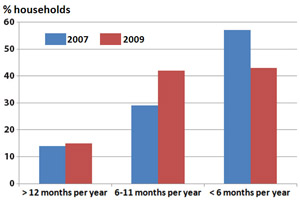
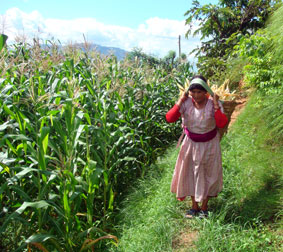 During 1997-2008,
During 1997-2008,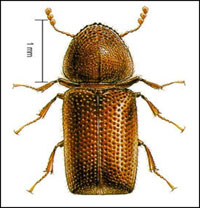 The larger grain borer is taking a beating from CIMMYT breeders in Kenya as new African maize withstands the onslaught of one of the most damaging pests.
The larger grain borer is taking a beating from CIMMYT breeders in Kenya as new African maize withstands the onslaught of one of the most damaging pests.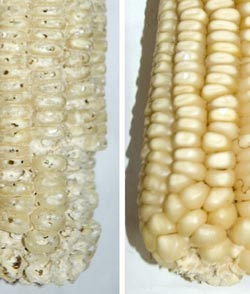 Even in Latin America, where it has co-evolved with natural predators, losses are significant. In Africa, where there are no similar predators to control the insect, its spread has been most dramatic. Attempts to introduce some of those predators to Africa to control the borer (a technique called biological control) have met with limited success and regionally concerted action is essential if biological control is to be effective across borer-infested areas. Researchers also studied the habits of the borer, hoping to find ways to reduce the damage it does. They discovered that it needs a solid platform, such as that provided by maize kernels still on the cob, before it will bore into a kernel. Unfortunately African farmers often store maize on the cob, increasing the potential for borer damage. By shelling the maize and storing the kernels off the cob, the damage can be reduced by small amounts, but losses are still very high. This is what makes the development of new varieties, where the resistance lies in the seed, so exciting.
Even in Latin America, where it has co-evolved with natural predators, losses are significant. In Africa, where there are no similar predators to control the insect, its spread has been most dramatic. Attempts to introduce some of those predators to Africa to control the borer (a technique called biological control) have met with limited success and regionally concerted action is essential if biological control is to be effective across borer-infested areas. Researchers also studied the habits of the borer, hoping to find ways to reduce the damage it does. They discovered that it needs a solid platform, such as that provided by maize kernels still on the cob, before it will bore into a kernel. Unfortunately African farmers often store maize on the cob, increasing the potential for borer damage. By shelling the maize and storing the kernels off the cob, the damage can be reduced by small amounts, but losses are still very high. This is what makes the development of new varieties, where the resistance lies in the seed, so exciting.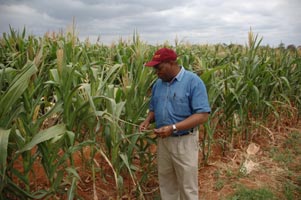 CIMMYT researchers found resistance to the borer in the Center’s germplasm bank, in maize seed originally from the Caribbean. The bank holds 25,000 unique collections of native maize races. By using conventional plant breeding techniques, crossing those plants with maize already adapted to the conditions found in eastern Africa, Mugo and the breeding team were able to combine the resistance of the Caribbean maize with the key traits valued by Kenyan maize farmers. The maize was tested for resistance at the KARI research station in Kiboko, Kenya. Larger grain borers were placed in glass jars with a known weight of maize. Weight changes to the maize and a visual assessment of damage were recorded, allowing researchers to select the best lines. The result is new maize varieties that will benefit farmers in Kenya and help reduce Kenya’s dependence on imported maize for national food security.
CIMMYT researchers found resistance to the borer in the Center’s germplasm bank, in maize seed originally from the Caribbean. The bank holds 25,000 unique collections of native maize races. By using conventional plant breeding techniques, crossing those plants with maize already adapted to the conditions found in eastern Africa, Mugo and the breeding team were able to combine the resistance of the Caribbean maize with the key traits valued by Kenyan maize farmers. The maize was tested for resistance at the KARI research station in Kiboko, Kenya. Larger grain borers were placed in glass jars with a known weight of maize. Weight changes to the maize and a visual assessment of damage were recorded, allowing researchers to select the best lines. The result is new maize varieties that will benefit farmers in Kenya and help reduce Kenya’s dependence on imported maize for national food security. A USAID-funded study by Williams College economist Douglas Gollin shows that modern maize and wheat varieties not only increase maximum yields in developing countries, but add hundreds of millions of dollars each year to farmers’ incomes by guaranteeing more reliable yields than traditional varieties.
A USAID-funded study by Williams College economist Douglas Gollin shows that modern maize and wheat varieties not only increase maximum yields in developing countries, but add hundreds of millions of dollars each year to farmers’ incomes by guaranteeing more reliable yields than traditional varieties.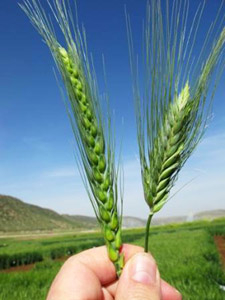 In order to contribute to world food security, the International Research Initiative for Wheat Improvement (IRIWI), supported by research organisations and funding agencies from about ten countries, has been adopted by the Ministers of Agriculture of the G20. INRA, with the Biotechnology and Biological Sciences Research Council (UK) and the International Maize and Wheat Improvement Center (CIMMYT, Mexico), will contribute to the coordination activities of the IRIWI during the first four years of the project.
In order to contribute to world food security, the International Research Initiative for Wheat Improvement (IRIWI), supported by research organisations and funding agencies from about ten countries, has been adopted by the Ministers of Agriculture of the G20. INRA, with the Biotechnology and Biological Sciences Research Council (UK) and the International Maize and Wheat Improvement Center (CIMMYT, Mexico), will contribute to the coordination activities of the IRIWI during the first four years of the project.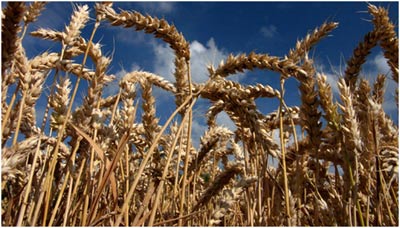
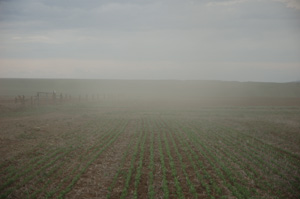 Zero-tillage trials in rainfed, winter wheat-fallow systems show smallholder farmers on the Anatolian Plains a way to double their harvests.
Zero-tillage trials in rainfed, winter wheat-fallow systems show smallholder farmers on the Anatolian Plains a way to double their harvests.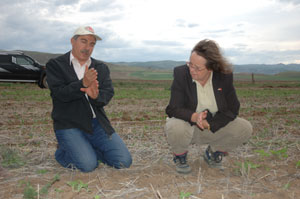
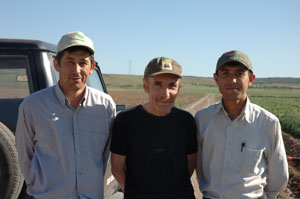 Retired agronomist Mufit Kalayci, recently brought back to the Anatolian Agricultural Research Center in Eskisiher, Turkey, to mentor a new team, sees the value of zero-tillage in intensive, irrigated systems with more than a single crop per year, but is skeptical about using it with traditional rainfed wheat farms. “I don’t think you can retain enough moisture over the fallow period.” he says. For that reason, one of the goals of the zero-tillage experiment was to see if a second crop other than weeds could be grown during the fallow season. This question will be answered in coming years.
Retired agronomist Mufit Kalayci, recently brought back to the Anatolian Agricultural Research Center in Eskisiher, Turkey, to mentor a new team, sees the value of zero-tillage in intensive, irrigated systems with more than a single crop per year, but is skeptical about using it with traditional rainfed wheat farms. “I don’t think you can retain enough moisture over the fallow period.” he says. For that reason, one of the goals of the zero-tillage experiment was to see if a second crop other than weeds could be grown during the fallow season. This question will be answered in coming years.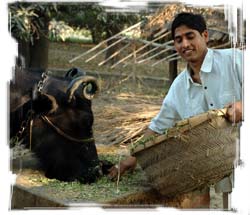 A daring move by a young farmer in India has changed his life and his father’s.
A daring move by a young farmer in India has changed his life and his father’s.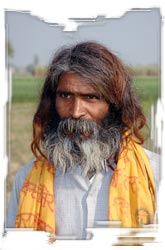
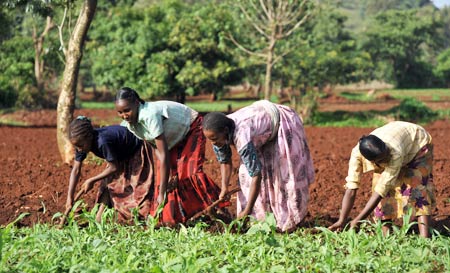 Bold Initiative Tackles Hunger in Developing World
Bold Initiative Tackles Hunger in Developing World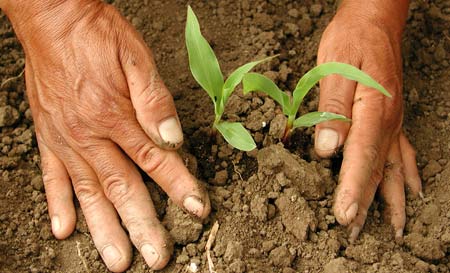 The
The 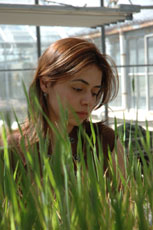 Erginbas is just beginning work on a project to screen wheat for resistance to a disease called crown rot. It is caused by a microscopic fungus in the soil called Fusarium culmorum (related to but not the same as the Fusarium fungus that causes head blight in wheat) and can cause farmers serious loss of yield. Her first tests have been with plants grown in a greenhouse on the station. Later she will expand her work to the field and as part of her program will spend some time in Australia with the Commonwealth Scientific and Industrial Research Organization (CSIRO). Since there is some evidence that the fungus that causes crown rot can survive for up to two years in crop residues, there is a great interest in this work as more farmers adopt reduced tillage and stubble retention on their land.
Erginbas is just beginning work on a project to screen wheat for resistance to a disease called crown rot. It is caused by a microscopic fungus in the soil called Fusarium culmorum (related to but not the same as the Fusarium fungus that causes head blight in wheat) and can cause farmers serious loss of yield. Her first tests have been with plants grown in a greenhouse on the station. Later she will expand her work to the field and as part of her program will spend some time in Australia with the Commonwealth Scientific and Industrial Research Organization (CSIRO). Since there is some evidence that the fungus that causes crown rot can survive for up to two years in crop residues, there is a great interest in this work as more farmers adopt reduced tillage and stubble retention on their land.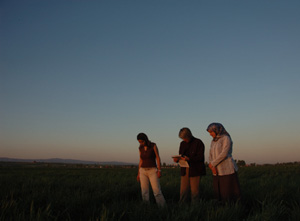 These pathogens are especially damaging when wheat is grown under more marginal conditions, and so the work in Turkey that these two young students are doing may have its greatest impact where farmers struggle the most.
These pathogens are especially damaging when wheat is grown under more marginal conditions, and so the work in Turkey that these two young students are doing may have its greatest impact where farmers struggle the most.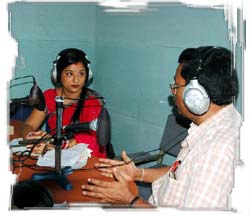 A radio program in Nepal brings information to farmers in a language they understand.
A radio program in Nepal brings information to farmers in a language they understand.
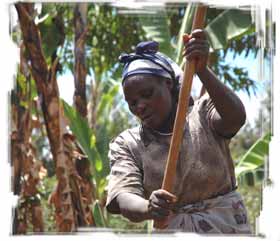 Improved maize makes a big difference in the lives of smallholder farmers on the slopes of Mt Kenya.
Improved maize makes a big difference in the lives of smallholder farmers on the slopes of Mt Kenya.
